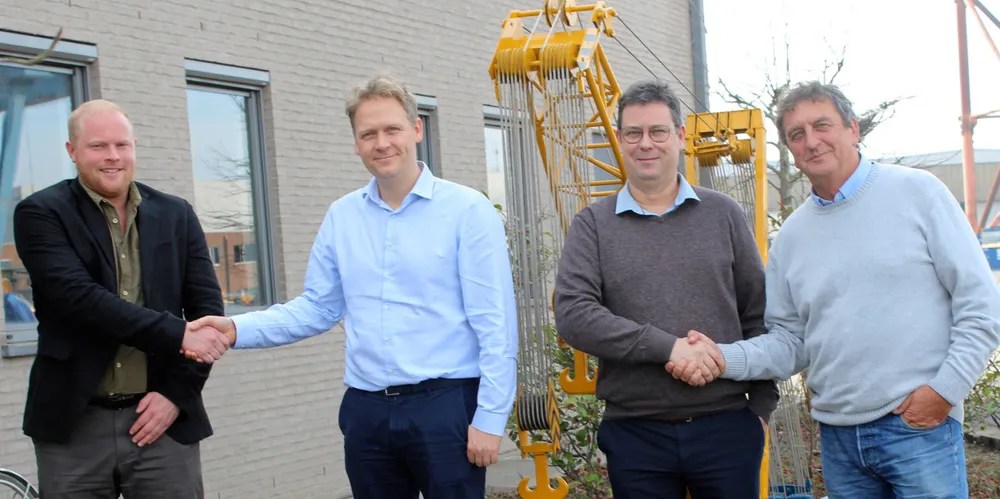Sarens takes stake in UK technology start-up TugDock as French floating wind debut nears
Belgian contracting giant makes investment in Cornwall-based outfit developing modular industrial dock concept expected to slash cost of building deepwater projects

Belgian construction and transport giant Sarens has taken a strategic investment in UK outfit Tugdock, looking to accelerate development of a buoyancy technology hatched by the start-up for a range of cost-cutting applications in the emerging floating wind sector.
The Cornwall-based company’s modular floating dock concept, which can be sized up to form quaysides able to support loads as great as 35,000 tonnes in locations without industrial infrastructure, promises to offer a ‘mobile’ means of creating construction space to assemble floating wind turbines for tow-out “at a fraction of the cost” of standard dry docks.
“Through this partnership with Tugdock, we are able to streamline the solution we offer to developers. By significantly reducing time and costs, our alliance will deliver a step change for wind turbine construction,” said Carl Sarens, Sarens’ director of technical solutions, projects & engineering.
“In addition, Tugdock’s flexibility and reusability is useful to global developers as the units can be reused from one port or project to another regardless of changes in turbine size or foundation weight.”
Tugdock CEO Shane Carr said: “Tugdock is a technology which enables heavy marine structures to be built or assembled and loaded-out in ports with water depth or space restrictions. The Tugdock submersible platform is modular, road transportable, easy to erect, and reusable.
“Working in partnership with a large multinational such as Sarens will accelerate our development, enabling further innovation [in] the floating wind industry.”
Tugdock buoyancy modules are being used to reduced the draft of the TLPs while moored in harbour to minimise motions during mating of turbine and platform, as well as to facilitate operations and maintenance activities before tow-out.
Tugdock director of business development Lucas Lowe-Houghton said: “Very few of the world’s ports have sufficient water depth and assembly quay space to build the huge turbine floaters required and conventional dry docks are not wide enough as they were originally designed for ships.
“Our technology allows floating dry docks to be delivered... and assembled at the port to dimensions far wider than most of the world’s existing dry docks,” he adds, noting: “More than 8% of the total cost of a floating wind farm is accounted for by assembly and installation. So, any innovation that allows this process to be carried out more efficiently and quickly will have a big impact on profitability for developers.”